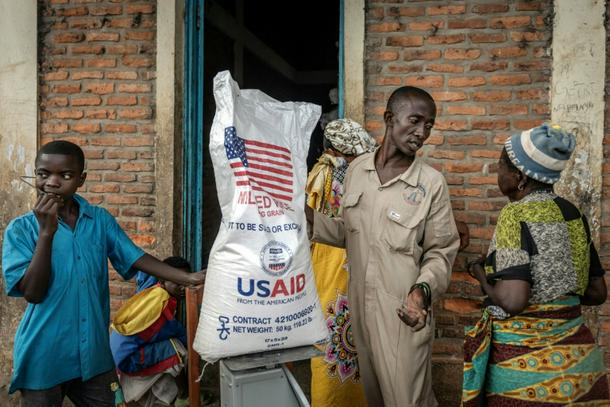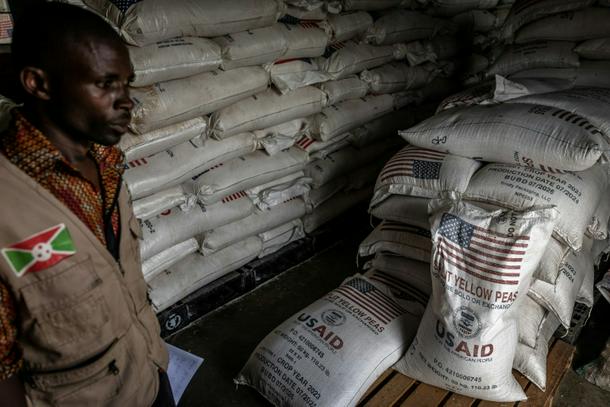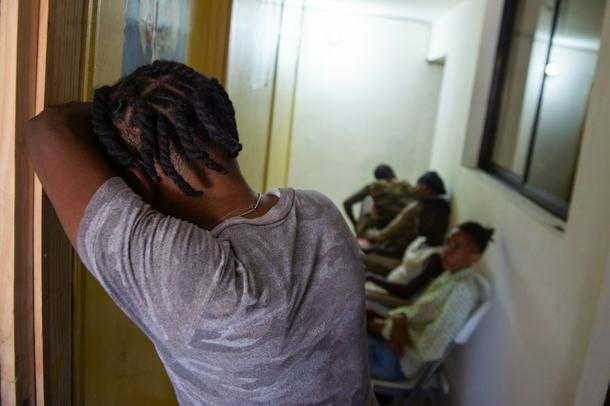
Former Trump advisor Elon Musk boasted of putting the USAID agency 'through the woodchipper'
Paris (AFP) - More than 14 million of the world’s most vulnerable people, a third of them small children, could die by 2030 because of the Trump administration’s dismantling of US foreign aid, research projected on Tuesday.
The study in the prestigious medical journal The Lancet was published as world and business leaders met at a United Nations conference in Spain to try to bolster the reeling aid sector.
The US Agency for International Development (USAID) had provided over 40 percent of global humanitarian funding until Donald Trump returned to the White House in January.
Two weeks later, Trump’s then-close advisor – and the world’s richest man – Elon Musk boasted of having put the agency “through the woodchipper”.
The funding cuts “risk abruptly halting – and even reversing – two decades of progress in health among vulnerable populations”, warned study co-author Davide Rasella, a researcher at the Barcelona Institute for Global Health (ISGlobal).

One of the last sacks of rice supplied by USAID arrives in Burundi in May
“For many low- and middle-income countries, the resulting shock would be comparable in scale to a global pandemic or a major armed conflict,” he said in a statement.
Looking back over data from 133 nations, the international team of researchers estimated that USAID funding had prevented 91.8 million deaths in developing countries between 2001 and 2021.
That is more than the estimated number of deaths during World War II – history’s deadliest conflict.
- Children already dying -
The researchers also used modelling to project how funding being slashed by 83 percent – the figure announced by the US government earlier this year – could affect death rates.

Before its funding was slashed, USAID represented 0.3 percent of all US federal spending
The cuts could lead to more than 14 million avoidable deaths by 2030, the projections found.
That number included over 4.5 million children under the age of five – or around 700,000 child deaths a year.
For comparison, around 10 million soldiers are estimated to have been killed during World War I.
USAID funding was found to be particularly effective at staving off preventable deaths from disease.
There were 65 percent fewer deaths from HIV/AIDS in countries receiving a high level of support compared to those with little or no USAID funding, the study found.
Deaths from malaria and neglected tropical diseases were similarly cut in half.
Winnie Byanyima, head of the UN’s HIV programme UNAIDS, said the funding cuts could lead to an additional 6.6 million people becoming infected with HIV in the next four years.
“We could see 4.2 million more AIDS-related deaths – that includes 300,000 children,” she told a press conference on Tuesday.
South Sudan is already feeling the effect of the US cuts, said Denish Ogen Rwot of the NGO Action Against Hunger.

HIV patients wait for medication in Haiti, where hospitals fear the impact of the USAID funding cuts
“Already we are having children die,” he told AFP.
A recently updated tracker run by disease modeller Brooke Nichols at Boston University estimates that nearly 108,000 adults and more than 224,000 children have already died as a result of the US aid cuts.
That works out to 88 deaths every hour, according to the tracker.
- More deaths from Europe, UK cuts -
After USAID was gutted, several other major donors, including France, Germany and the UK, followed suit in announcing plans to slash their foreign aid budgets.

UN Secretary-General Antonio Guterres (R) has urged the world to 'rev up the engine of development'
These aid reductions, particularly in the European Union, could lead to “even more additional deaths in the coming years,” study co-author Caterina Monti of ISGlobal said.
But the grim projections are based on the current amount of pledged aid, so could rapidly come down if the situation changes, the researchers emphasised.
Dozens of world leaders – though no one from the United States – attended an aid conference in the Spanish city of Seville this week.
A declaration was adopted reaffirming previous goals but it is not legally binding.
This year’s aid cuts spearheaded by the United States could also nearly double the number of people forced to flee their homes this year, the Danish Refugee Council warned Tuesday.
Before its funding was slashed, USAID represented 0.3 percent of all US federal spending.
“US citizens contribute about 17 cents per day to USAID, around $64 per year,” said study co-author James Macinko of the University of California, Los Angeles.
“I think most people would support continued USAID funding if they knew just how effective such a small contribution can be to saving millions of lives.”